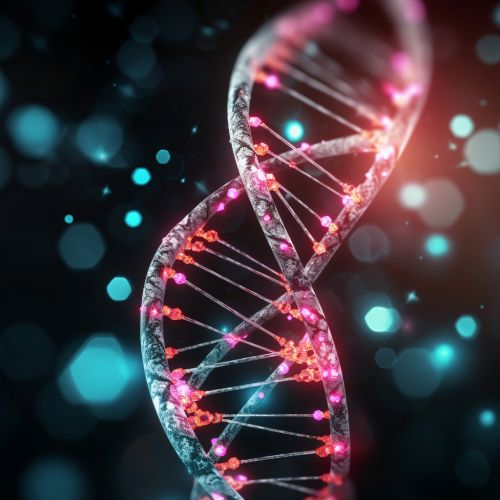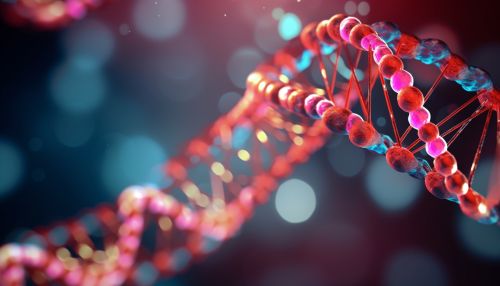Mutagenesis
Introduction
Mutagenesis is a process by which the genetic information of an organism is changed in a stable manner, resulting in a mutation. It may occur naturally, in the case of replication errors or repair deficiencies, or be induced by mutagens. Mutagenesis can lead to alterations in the structure and function of proteins encoded by the mutated genes, which can have significant impacts on the organism's phenotype.
Types of Mutagenesis
There are several types of mutagenesis, including point mutagenesis, insertion mutagenesis, and deletion mutagenesis.
Point Mutagenesis
Point mutagenesis involves a change in a single base pair in the DNA sequence. This can result in a silent mutation, where the change does not affect the protein sequence, a missense mutation, where the change results in a different amino acid in the protein sequence, or a nonsense mutation, where the change results in a premature stop codon.
Insertion Mutagenesis
Insertion mutagenesis involves the addition of one or more nucleotides into the DNA sequence. This can cause a frameshift mutation, where the reading frame of the gene is altered, resulting in a completely different protein sequence downstream of the insertion.
Deletion Mutagenesis
Deletion mutagenesis involves the removal of one or more nucleotides from the DNA sequence. Like insertion mutagenesis, this can also cause a frameshift mutation.
Mutagens
Mutagens are physical or chemical agents that can cause DNA damage, leading to mutations. They can be classified into two main categories: physical mutagens and chemical mutagens.
Physical Mutagens
Physical mutagens include ultraviolet (UV) light and ionizing radiation. UV light can cause pyrimidine dimers, which are covalent linkages between adjacent pyrimidine bases in DNA. Ionizing radiation, such as X-rays and gamma rays, can cause double-strand breaks in DNA.
Chemical Mutagens
Chemical mutagens include alkylating agents, base analogs, intercalating agents, and deaminating agents. Alkylating agents can add alkyl groups to DNA bases, leading to mispairing during DNA replication. Base analogs can substitute for DNA bases during replication, leading to mispairing. Intercalating agents can insert themselves between DNA bases, leading to insertions or deletions. Deaminating agents can remove amino groups from DNA bases, leading to point mutations.
Mutagenesis in Molecular Biology
Mutagenesis is a fundamental tool in molecular biology, used to study gene function and protein structure. There are several methods of mutagenesis used in molecular biology, including site-directed mutagenesis, random mutagenesis, and insertional mutagenesis.
Site-Directed Mutagenesis
Site-directed mutagenesis is a method used to introduce specific mutations at specific sites in a DNA molecule. This is often used to study the function of a specific protein domain or to create a protein with a specific property.
Random Mutagenesis
Random mutagenesis is a method used to introduce random mutations throughout a DNA molecule. This is often used to generate a library of mutant proteins for screening and selection experiments.
Insertional Mutagenesis
Insertional mutagenesis is a method used to introduce a DNA sequence at a specific site in a DNA molecule. This is often used to disrupt the function of a specific gene or to introduce a new gene into an organism.


Consequences of Mutagenesis
The consequences of mutagenesis can be varied and profound. Mutations can lead to changes in protein function, which can have significant impacts on an organism's phenotype. Some mutations can lead to diseases, such as cancer, while others can confer benefits, such as antibiotic resistance in bacteria or pesticide resistance in insects.
